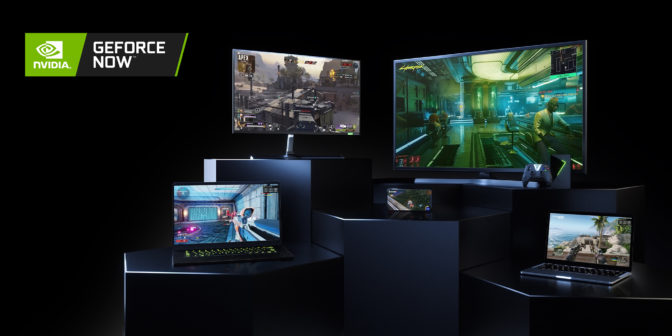Starting next week, Fortnite on GeForce NOW will launch in a limited-time closed beta for mobile, all streamed through the Safari web browser on iOS and the GeForce NOW Android app.
The beta is open for registration for all GeForce NOW members, and will help test our server capacity, graphics delivery and new touch controls performance. Members will be admitted to the beta in batches over the coming weeks.
‘Fortnite’ Streaming Gameplay Comes to Mobile Through iOS Safari and Android With Touch Inputs
Alongside the amazing team at Epic Games, we’ve been working to enable a touch-friendly version of Fortnite for mobile delivered through the cloud. While PC games in the GeForce NOW library are best experienced on mobile with a gamepad, the introduction of touch controls built by the GeForce NOW team offers more options for players, starting with Fortnite.
Beginning today, GeForce NOW members can sign up for a chance to join the Fortnite limited-time closed beta for mobile devices. Not an existing member? No worries. Register for a GeForce NOW membership and sign up to become eligible for the closed beta once the experience starts rolling out next week. Upgrade to a Priority or RTX 3080 membership to receive priority access to gaming servers. A paid GeForce NOW membership is not required to participate.

For tips on gameplay mechanics or a refresher on playing Fortnite with touch controls, check out Fortnite’s Getting Started page.
More Touch Games
And we’re just getting started. Cloud-to-mobile gaming is a great opportunity for publishers to get their games into more gamers’ hands with touch-friendly versions of their games. PC games or game engines, like Unreal Engine 4, which support Windows touch events can easily enable mobile touch support on GeForce NOW.
We’re working with additional publishers to add more touch-enabled games to GeForce NOW. And look forward to more publishers streaming full PC versions of their games to mobile devices with built-in touch support — reaching millions through the Android app and iOS Safari devices.
GFN Thursday Releases

GFN Thursday always means more games. Members can find these and more streaming on the cloud this week:
- The Anacrusis (New release on Steam and Epic Games Store, Jan. 13)
- Supraland Six Inches Under (New release on Steam, Jan. 14)
- Galactic Civilizations 3 (Free on Epic Games Store, Jan. 13 – 20)
- Ready or Not (Steam)
We make every effort to launch games on GeForce NOW as close to their release as possible, but, in some instances, games may not be available immediately.
What are you planning to play this weekend? Let us know on Twitter or in the comments below.
The post GFN Thursday: ‘Fortnite’ Comes to iOS Safari and Android Through NVIDIA GeForce NOW via Closed Beta appeared first on The Official NVIDIA Blog.









